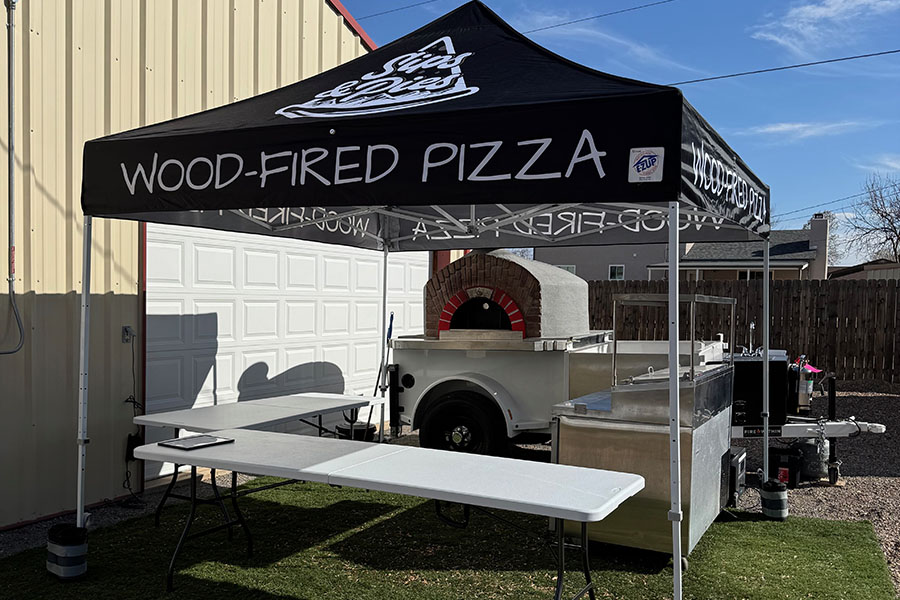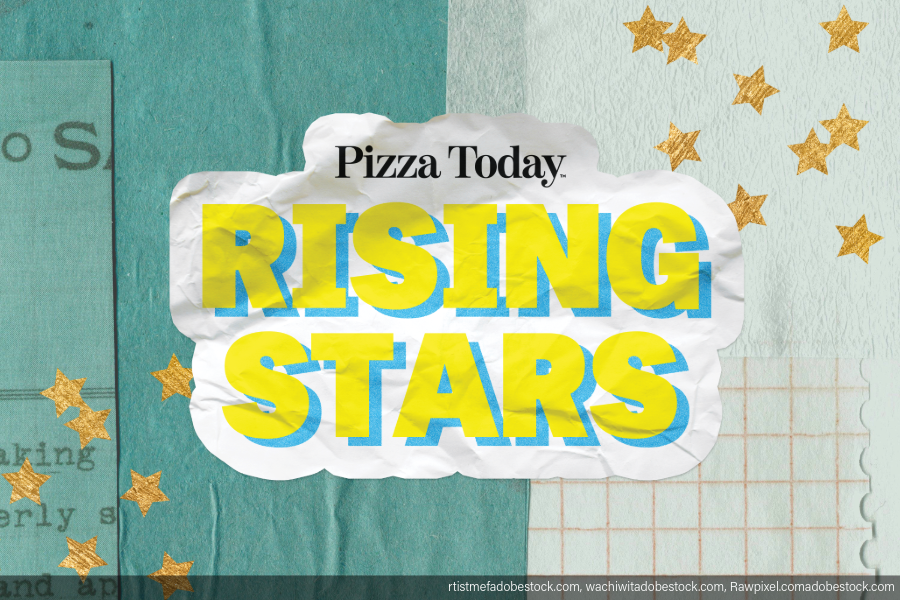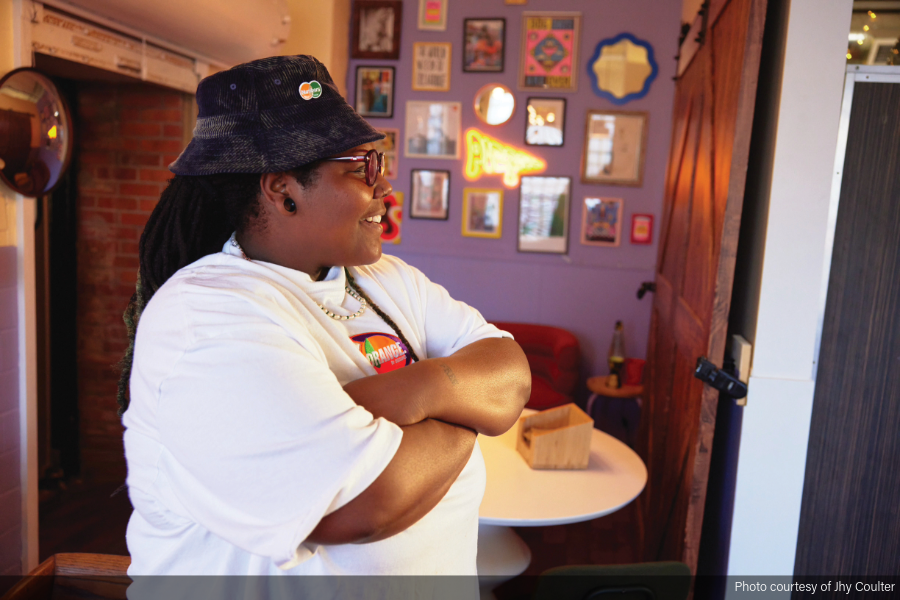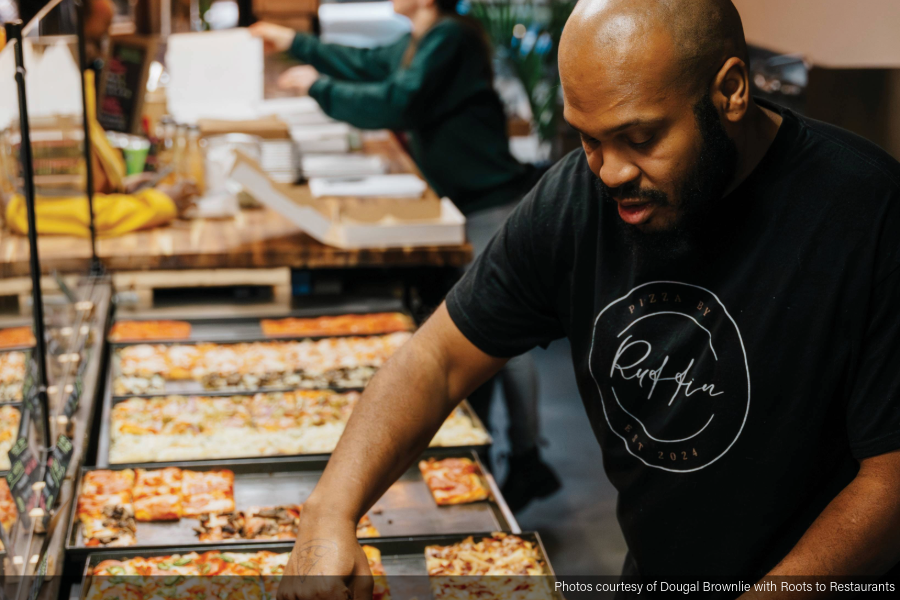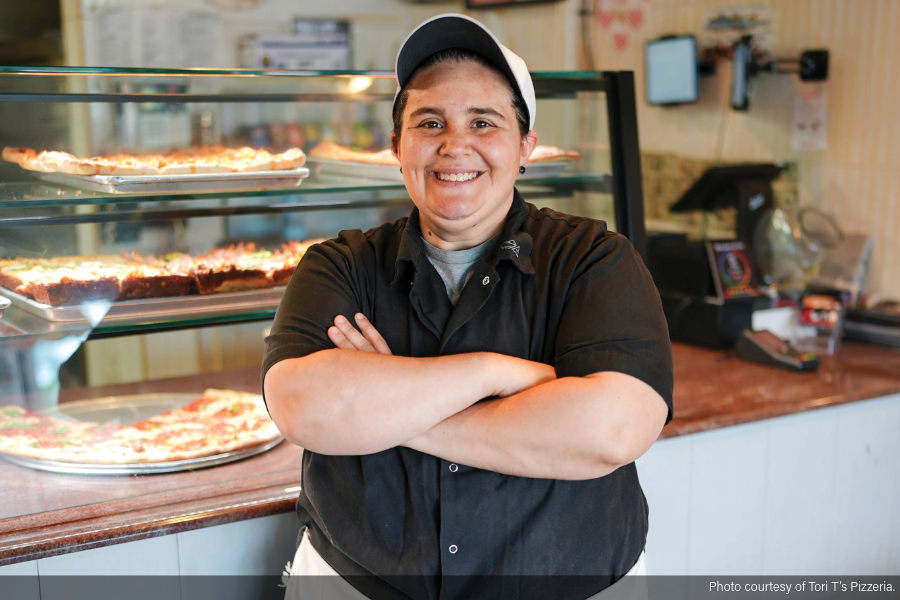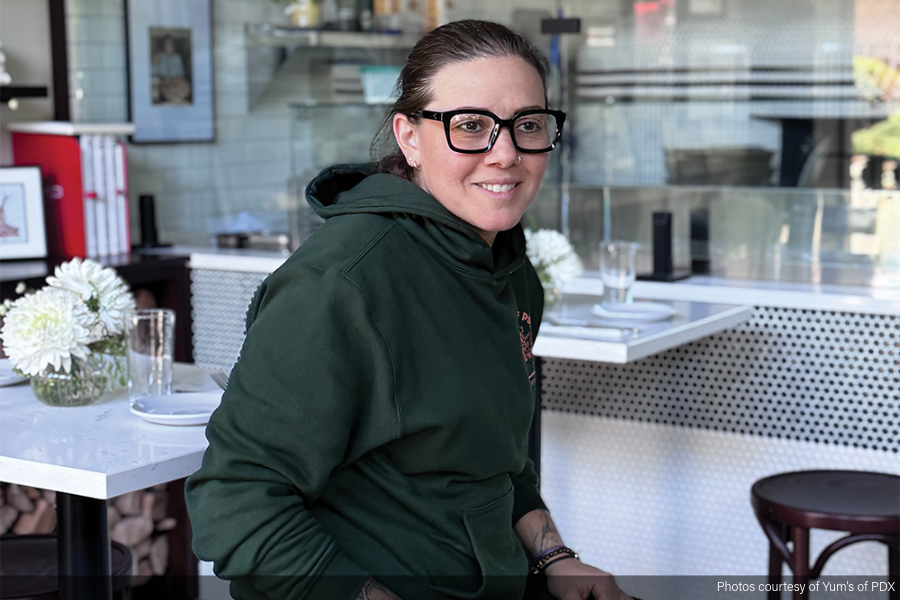Don’t overlook importance of window marketing
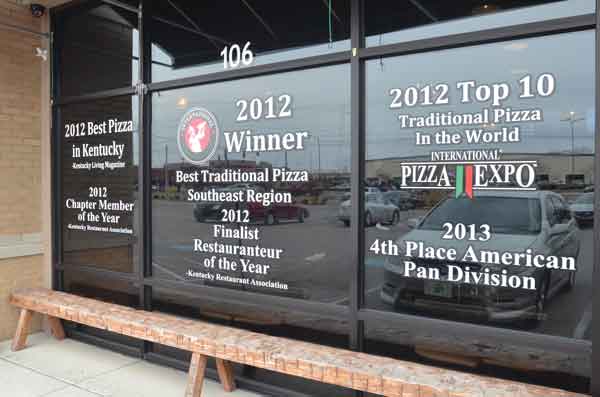
In the hospitality industry we often say, “People eat with their eyes.” Many pizzeria operators have learned to apply that to our menus, restaurant décor, open kitchens and more while enjoying the return on their investment. Despite acknowledging that we live in a visual culture, many have overlooked a golden marketing opportunity that has been well known for decades.
Do you recognize the lyrics that went to No. 1 in the U.S. Billboard magazine chart?
“How much is that doggie in the window?
The one with the waggly tail
How much is that doggie in the window?
I do hope that doggie’s for sale.”
Patti Page’s 1953 hit single drives home the point that your storefront, particularly your windows, are a valuable marketing asset for any retail store. Want further proof? Sensory marketing studies show that 83 percent of the information people retain is received visually. Colors, shapes, words and more displayed on your windows will influence whether that potential guest will walk through your doors. Take a trip to New York City and stroll past Macy’s and Saks 5th Avenue. As you glance at the window displays you see retail items that were selected by color, size and many other details. They are positioned in those windows to appeal to their specific customers. Your window shopping will likely turn into a purchase — and not by chance. These CEOs combined savvy marketing with the psychological effect of seeing to influence your buying decision.
Our goal in using this media is to attempt to establish a positive mental picture of our product or brand in the mind of the consumer. This image aims to form an association between the advertised product and/or brand with certain lifestyles or values. Its three basic functions are to:
- Increase customer awareness
- Convert the awareness into familiarity
- Use the familiarity to influence customers’ buying habits.
How are operators implementing these strategies? Nick Bogacz, owner-operator of two Caliente Pizza & Draft House locations in Pittsburgh, Pennsylvania, says, “Make sure your windows and outside window seals are clean.” The foodservice industry is constantly judged on cleanliness, so it should seem imperative to send that message to a consumer before they even enter the store. What could represent cleanliness more than the color white? White is the personification of all things clean and pure. For that reason Lou Toarmina, operator of Detroit-based Toarmina’s Pizza (with 18 franchised units in Michigan and Mississippi), says that “white letters always show up the best” on window displays. So while sending a message of cleanliness, we can also get across our message, such as pertinent information like hours of operation or offers. Toarmina also recommends his franchisees keep things positive by avoiding messages like “no smoking” or “no checks” on their windows. In today’s world, these are redundant phrases that may put off some consumers.
Independent operator Fiorina Sunseri of The Original Giovanni’s Pizza, located on a busy street in downtown Pittsburgh, Pennsylvania, realizes she needs to make customers aware of her business quickly. “Colorful displays attract the eye, engaging the customer’s appetite,” she says. “Keep the wording short and promote items by using descriptive words to let customers know the product is quality.” These types of words create mental images that stay with a consumer.
Sunseri adds, “The window is the eye to the customer.” Advertisements are sometimes described as the nervous system of the business world. When a customer looks into your figurative eyes — your restaurant’s windows — your displayed messages need to give all possible sensations quickly. The advertisement, which is comparable to the nervous system, must stir up as many different kinds of images as the object itself can excite, images that will move the consumer to desire your product.
 We’re familiar with the phrase: “The eyes are the windows of the soul.” People say this when they can see emotion in somebody’s eyes like pain or anger. When it comes to window marketing, “don’t clutter and always look at it from a customer’s perspective and from across the street,” Bogacz recommends. Window clutter has to be one of the biggest turn-offs to me personally. I see many independent operations with windows covered with flyers promoting events unrelated to their business. Spaghetti dinners, raffles, work wanted, missing kittens –– all worthwhile messages, but you have essentially given them part of your advertising budget. It is hard to say “no” to customers promoting these activities. My solution was to create a community board inside my dining room entrance, keeping precious space for my marketing.
We’re familiar with the phrase: “The eyes are the windows of the soul.” People say this when they can see emotion in somebody’s eyes like pain or anger. When it comes to window marketing, “don’t clutter and always look at it from a customer’s perspective and from across the street,” Bogacz recommends. Window clutter has to be one of the biggest turn-offs to me personally. I see many independent operations with windows covered with flyers promoting events unrelated to their business. Spaghetti dinners, raffles, work wanted, missing kittens –– all worthwhile messages, but you have essentially given them part of your advertising budget. It is hard to say “no” to customers promoting these activities. My solution was to create a community board inside my dining room entrance, keeping precious space for my marketing.
“We like to put bundles on the windows with price point,” Toarmina adds. “Usually I try to have one changeable cling.” Toarmina’s tactic keeps things fresh and to the point. A changeable cling is an easy way to present images and not let your window marketing get stagnant.
Bogacz’s Draft House displays daily happy-hour specials and uses neon lights to catch one’s attention.
Sunseri frequently updates promotions, making certain that the wording or the logo don’t blend into the background.
At my own pizzeria, I have employed a combination of images on perforated window clings along with digital imagery. The professional imagery highlight my signature items along with some text. The digital board can be updated in a matter of minutes to reflect current promotions or relay a brand message. I use digital messages reflecting my USP: “Think About Pizza.” One example is: “We use 100 Percent Natural Cheeses.” This can be read in seconds and conveys a simple, direct assurance of our product quality. The text on one of our perforated window clings reads, “Wanna Wedgie?” As you can imagine, this has become a photo opportunity for many while introducing a unique product.
Our visual culture is taking over the way we market our business. Visual media impacts the way we think, feel and react. Windows have become a valuable piece of marketing real estate, utilizing them as such impacts buyer’s perception of our brand and product.
Scott Anthony owns Punxsy Pizza in Punxsutawny, Pennsylvania. He is a marketing consultant and yearly speaker at International Pizza Expo.

